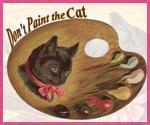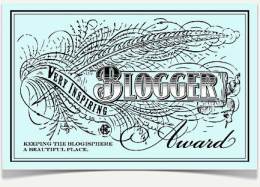
Congratulations! You have a reproduction hat. It may be one of mine. It may be one made by another talented milliner. In either case, you are ready for the next step.
This post is for you. This post will cover the most common topics and questions about reproduction straw hats for the 1850s and 1860s. Some of these answers will apply to other eras as well.
My hat is too big.
Good news – this is a fairly easy adjustment. If a hat is just a bit too big, meaning it wiggles but doesn’t flop, a lining ribbon or a lining can help it fit better. A cotton sateen or petersham ribbon around the inside is generally recommended for comfort anyway. Adding a thin layer of cotton or wool batting behind the ribbon can thicken the reduction while adding soft comfort. Adding a lining to the crown or crown and brim can also improve the fit. Choose a silk taffeta, silk organza, or cotton organdy. Light gathers will bring the size in a little, while denser gathers will bring it in even more.
My hat is too small.
First, double check how you are wearing your hat by comparing to original images. In the modern era we tend to wear hats lower on our head, coming down onto the forehead. In the mid-19th century, hats were worn much higher on the head. This can make a hat feel too small while it is actually the right size for you.
If you find a hat is truly too small, consider passing it along. A straw hat can be stretched a small amount with the aid of a hat stretcher and mist bottle. This will likely effect the shape of the crown, possibly distorting it from its blocked period shape.
I want to decorate my hat.

This is the fun part. Be sure to spend some time looking at original images before starting. You will find period fashion illustrations show densely decorated hats while period photographs show a little more restraint. Elements most often include ribbon, flowers, and feathers either center front or to one side with the ends of ribbon to the back.
Use a strong, sharp needle and thread to tack trims in place. Use large stitches that are secure yet removable. This way you can change the trims as desired. Please do not use glues on straw. Floral arrangements can be made in whole or pieces prior to attaching to the hat. They can be tacked in place with thread or with pins.
Line the interior of the crom for added comfort. This can be done with a cotton sateen or petersham ribbon around the crown edge or a silk taffeta, silk organza, or cotton organdy lining the crown or crown and brim. The lining can be added before or after the trim. Each milliner does it differently.
My hat won’t stay on my head.
As hats of the era were worn higher on the head, they often do not feel secure. Original hats show an elastic cord or ribbon ties was placed where the brim and crown meet, approximately just above the ear area. This cord or ties would go behind the head, securing under the hair arrangement. I find quarter to half inch wide cotton sateen or cotton petersham work well for this as they tie and untie easily without getti g stuck on the hair.
Period photographs show some hats also had wide, decorative ribbons sitting over the ear area, just in front of where these ties would be. These ribbons can be fairly wide, often plaid or striped. Rosettes or bows can be seen in front of the ears.
Can I wear a hairnet with a hat?
A plain hairnet is a hair accessory, an item used in arranging or dressing the hair. As such it was worn with a variety of millinery items, including hats. Remember, these nets were light weight and fine, made of silk threads or hair. Decorative nets, such as those made of woven ribbons, are also see in illustrations worn with hats. Ribbon headdresses, such as those on a foundation with pleated or ruched ribbon may not combine well with a hat as the hat will crush the ruche or the ruche will cause the hat not to sit properly
Hat FAQ Video
This video contains several helpful pieces of information on hats:
My hat might not be right.
Sadly, sometimes merchants or other reenactors sell hats that are not considered accurate. The reality is a great deal of progress has been made in understanding the fashionable hat of the 1859s and 1860s over the past two decades. Thanks to the surge in easily accessible resources, such as period fashion illustrations, photographs, and originals, we now know more about who wore hats, when they wore them, and what those hats look like. This also means that hats produced years ago are no longer considered as correct as they once were.
If you find yourself with a hat that may not be accurate, take some time to look at period images and original hats. Look at their shape and their proportions. Then go back to your hat. Honestly decide whether the hat can be improved and if you have the time, skill, and resources to do so. For some, this can be a challenge project. For some, this can be an added frustration.
Improvements can come in the form of wiring a hat’s brim edge, removing rows of plait from the edge, or shortening the crown at the base. Each of these can feel simple or overwhelming to a person. Please keep in mind sewing straw is different from sewing fabric. It may or may not be something you are comfortable with. If the answer is “no”, pass the hat along to a local theater or use it for something else.
Are you one of the many readers enjoying my millinery blog posts?
Consider becoming a Patreon patron. Doing so helps support my work and helps me write more useful articles.
https://www.patreon.com/AMillinersWhimsy








Straw hats and bonnets could be redecorated and even re-blocked (shaped) to reflect changes in fashion. (Within reason, of course) This made straw millinery very practical for those who may need a millinery piece to last.
The prices for straw millinery ranged quite a bit. A teenage diary writer from Canandaigua, NY wrote that her and her sister’s school bonnets in the fall cost 25 cents. The fashionable bonnets they bought in the spring were more. I don’t recall the amount off the top of my head.
In the past, did people of moderate means continue to wear hats that were no longer fashionable? I guess the real question is: were straw hats a significant purchase for working class or lower-middle-class women? So they wouldn’t just abandon an unfashionable hat but try to fix it up as best they could. Just curious.